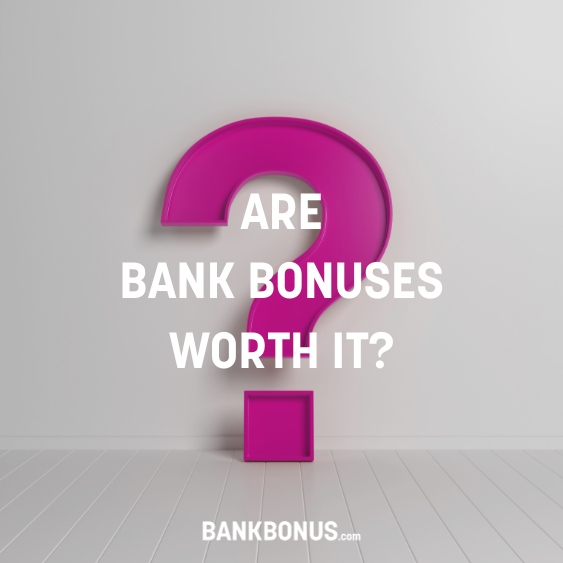If you want to transfer money, or you’re looking to send money to family members or friends, knowing what options are available can help you make the right decision.
When it comes to sending money from one bank to another, there are many ways to do this – and it’s pretty easy. Most of these ways apply to the majority of financial institutions, like credit unions and banks.
Each transfer service is useful for different scenarios, so how you transfer money will also depend on why you’re making the transfer. Let’s look at the options available for sending money from one account to another.
How To Transfer Money From One Bank To Another Online
Here are 7 ways to easily transfer money from one bank account to another:
- Link Accounts
- ACH Transfer
- Wire Transfer
- Write a Check
- Cashier’s Check or Money Order
- Payment App or e-Wallet
- Withdraw Cash
Option 1: Link Accounts
Many banks allow you to link different accounts through their mobile banking app to facilitate transfers between your accounts – whether these are at the same or other banks (i.e., external accounts).
These can be one-time or recurring transfers, so choose the one you need.
To add your account, you’ll need to have some account information at hand like:
- Your bank’s name
- Your routing number
- Receiving account number
- Type of account
Once you provide this information (and any other information that your bank may ask for), you’ll need to verify you’re the account’s actual owner. You can verify your account ownership in one of two ways, depending on the procedure followed by your bank.
Some banks offer instant verification, allowing you to log in to the secondary bank to verify ownership. Others will follow an entirely different procedure where a small amount of money is deposited into the new account you’ll need to verify.
Once this procedure is complete, you will transfer money from one bank to the other. You can even use this electronic transfer method to set up regular direct deposits.
This method can be especially useful if you need to make transfers from your credit card to your savings account.
Option 2: ACH Transfer
When it comes to moving money online, ACH transfers are often one of the most preferred methods. ACH stands for Automated Clearing House, which means two things – payments are automated and processed by a clearinghouse.
ACH payments are typically free or cost very little. While they’re automated, they are not instant and can take up to 3 business days to clear. Payments are processed in batches at intervals rather than on-demand.
If you initiated an ACH transfer later in the day, it might not process until the next banking day, which can be the day after or on Monday if you do the transfer on Friday evening.
Many banks allow account holders to initiate transfers online. This means that if you have online banking or the bank’s mobile app, you can initiate the online transfer from the comfort of your own home without having to set foot in a bank branch.
ACH transfers are how money moves when you link accounts, as described in option 1. This is also how money transfers when a direct deposit is made.
Option 3: Wire Transfer
Wire transfers are bank transfers you initiate yourself to send money to another bank account. Wire transfers are instantaneous – but they tend to cost a lot more than ACH transfers.
The bank might not grant you access to the money straight away, and you might need to wait a bit before the money becomes available. If time is essential, make sure that you initiate the wire transfer as early as possible in the day.
Wire transfers are not usually free. Both the sender and recipient can face charges, meaning that you'll pay a fee to send the money and another fee to receive the money. Fees vary from one bank to the next, so be sure to check with both to find the total cost of the transfer.
To send a wire transfer, you will need to have some information to ensure that the money gets sent to the right account.
Required information typically includes:
- Account holder’s name
- Bank’s name
- Recipient’s account number
- ABA routing numbers
Be sure to check with your bank what information is required to avoid unnecessary delays in the process.
Option 4: Write a Check
Many bank accounts have check-writing privileges. This is certainly true for checking accounts, but some savings accounts will also come with the ability to write checks.
If you’re transferring money to an account you hold, and your account supports checks’ writing, you can simply write a check to yourself. If you’re transferring money to someone else’s account, then write their name.
Either way, the check has to come from the account you want to transfer money from and then deposit it in the account where you want the money.
There are a few ways available to you to deposit checks. You can go to a branch of the bank that holds the account you want to deposit into. Do keep in mind that you might need to wait in line.
Many banks have also closed their physical doors to customers due to the pandemic, so you might want to check the bank’s website before making the trip over.
Some banks also allow you to mail the check-in. You also probably need to include a deposit bank, but this procedure varies from one bank to the next. Make sure you check the bank’s website or give them a call to ensure your check doesn’t get lost.
If you have a mobile banking app, the chances are that it includes a mobile check deposit. This feature is relatively new, and it’s great. If your mobile banking app supports it, you can simply take a picture of the check using your phone’s camera and then upload it to the app. It is one of the fastest and least demanding options.
Checks typically take a few days to clear, but some banks offer instant mobile deposits if you meet certain requirements. For example, if you have a linked USAA credit card, mobile deposits into your USAA accounts are instant.
Before you write the check, make sure there is enough money in your account to cover the amount. Failure to do so may lead to overdrawing the account, which typically incurs an overdraft fee.
You may also get an NSF charge and see the check bounce, which can be problematic to your credit score.
Option 5: Get a Cashier’s Check or Money Order
If your account doesn’t have check-writing capabilities, you might still be able to write yourself a check. Cashier’s checks or money orders are special checks that the bank issues on your behalf using money from your account.
You will need to request the cashier’s check from the bank that holds the account you want to transfer money from. To do this, you can visit the branch but keep in mind that it might be closed due to the pandemic.
To save yourself some time and hassle, be sure to check the bank’s procedure and follow their guidelines accordingly. In most cases, the bank will make this available on their website.
Some banks also allow account holders to request cashier’s checks through the mobile banking app. Check your app to see if this feature is available, as it will save you some time from having to visit the bank’s branch.
Of course, the cashier’s check needs to be written to yourself if you’re transferring money to yourself, as this will allow you to deposit it into your other account.
Once you receive the check, you can either deposit it at your local branch, mail it in, or use your banking app’s mobile check deposit feature to deposit it into your account – provided that this is available, of course.
Option 6: Use a Payment App or e-Wallet
Payment apps and e-Wallets are special types of apps that allow you to transfer funds and keep money in digital wallets.
PayPal is certainly one of the most well-known payment apps, but there are many others that you can use instead, should you not particularly like Paypal.
- PayPal: PayPal is an online wallet that is known and used all over the world. It comes with a handy Send and Request Money feature – you can add money to your PayPal account and then transfer it to any bank account.
- Venmo: Venmo is a payment app that allows you to pay by debit card, credit card, or bank account. This way, you can pay yourself from one account into the other. It’s good to know that Venmo bank transfers can take up to 3 days and are free of charge.
- Cash App: Cash App is a fully-fledged online banking app that allows you to receive and send money. You can add your bank account in the app itself and then either keep the money in the Cash App bank account or transfer it.
- Zelle: Many bank’s apps use Zelle to allow you to easily transfer funds to friends and family members who also use Zelle – all you need is their phone number. This way, you can use Zelle to transfer money to a secondary account, provided this also has Zelle enabled.
- Apple Pay: You can transfer money in your Apple Cash card to a bank account. This typically takes between one to three business days. Transfers can be initiated from the Wallet app in a few single steps.
Option 7: Withdraw Cash
While not the most practical of options, it’s a good last resort when all else fails. To transfer money from one bank account to another, you can withdraw the money as cash from one bank account and deposit it into the other.
If your account comes with a debit card, you can withdraw cash from an ATM. It might be worth your while making sure that the ATM is fee-free to avoid extra charges. Keep in mind that there’s usually a limit to the amount of money you can withdraw. This means that if you want to transfer a large amount of money, you’ll have to either do it in batches or look at another method.
One other thing to keep in mind is that if the account you want to transfer money to is held with an online bank, depositing checks might not be an option at all. Having said that, some online banks do offer the option of depositing cash. Either way, it is best to check with your bank to make sure that you can deposit cash.
Cash can be deposited at the bank or through an ATM. Depositing cash at the bank should see the funds become available in your account immediately. ATM deposits can take a bit longer. Make sure that your bank owns the ATM, as this can help you make sure that you receive the funds faster.
Different ATMs follow different processes. Some ATMs will allow you to deposit the cash, while others will require you to put it in an envelope first – with envelopes available next to the machine. Either way, the ATM will direct you through the process, helping you make the deposit in full confidence.
Frequently Asked Questions
Which is the best way to transfer money?
While there’s no one best way to transfer money – there are many methods available, each with its pros and cons. If you need to transfer money fast, a wire transfer will be your best bet, while ACH offers a cheaper option if you can wait.
If you don’t have access to a banking app, writing yourself a check can help you move money around – whether you have your own checkbook or by getting a cashier’s check.
You can also use one of the many e-Wallet apps available to transfer money.
How much does it cost to transfer money?
How much it costs to transfer money will largely depend on the method you choose. Some are free, while others will cost you quite a bit. In most cases, when you pay money, you get a distinct advantage (like a faster turnaround).
Different banks will have different fees, with fees even changing according to the type of account you have. For example, wire transfers will cost you between $10-$65, while Venmo charges a 1% fee (with a maximum fee of $10).
Many banks offer different prices depending on the account tier. Some accounts will also include a limited or unlimited number of free withdrawals, making transfers very cost-effective. This means that your best bet is to check with your bank about the fees you’ll have to pay to transfer money.
How long does it take to transfer money?
Just like fees, time will depend on the method chosen. Wire transfers tend to be the fastest and are usually completed on the same day, provided that you initiate the transfer early in the morning.
Exceptions apply, so do be aware of that. ACH transfers can take a few days, as do check deposits.
Choosing The Best Way To Transfer Money
With so many options available to move money between accounts, choosing the right kind of transfer service can be tricky. Before you make your decision, ask yourself some questions – like how long you’re willing to wait for the money to come through.
Virtually all accounts come with ACH and wire transfers – but not all accounts have checkbooks. Getting a cashier’s check might be a bit of an issue right now, so this option might take longer at this time.
Depending on the amount of money you want to transfer, you might be able to withdraw it as cash from an ATM, but again, this method might not work if you’re looking to transfer a large sum of money.
E-Wallets and payment apps could also be great options, but this is more of a workaround since their primary purpose is online shopping rather than transferring money between accounts.
Even so, it might be a good option depending on your circumstances.





Comments are closed.
Comments are closed here.